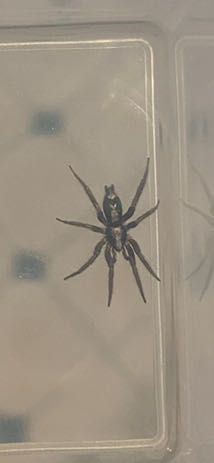Ant-mimic Jumping Spider, or more specifically, possibly a species of 'Broad-faced Sac Spider'
Scientific Name: Possible genus 'Castianeira' (Ant-mimic Sac Spiders) or 'Trachelas' (Broad-faced Sac Spiders), exact species not identifiable from image alone.
Order & Family: Order: Araneae, Family: Corinnidae (Ant-mimic Corinnid Sac Spiders) or Trachelidae (Broad-faced Sac Spiders)
Size: Typically small to medium-sized, ranging from 3 to 10 mm in body length.

Natural Habitat
Many species in these families are found in various habitats, including leaf litter, under rocks and logs, on vegetation, and often indoors in human dwellings. They are generally ground-dwelling or found in low vegetation.
Diet & Feeding
Predatory. They actively hunt small insects and other arthropods. Unlike many spiders, they do not typically build webs to catch prey, but rather stalk and pounce on their victims.
Behavior Patterns
These spiders are known for their active hunting behavior. Some, like 'Castianeira' species, mimic ants in appearance and movement to deter predators and possibly to get close to ant colonies for prey. They are fast-moving. Their bites are generally not considered medically significant to humans.
Risks & Benefits
Risks: Generally considered harmless to humans. While they can bite if provoked, their venom is not dangerous to people, typically causing only mild, localized pain, itching, or redness. Benefits: They are beneficial natural predators, helping to control populations of various small insects and arthropods, including pests, within their ecosystems and sometimes within human structures.
Identified on: 9/13/2025